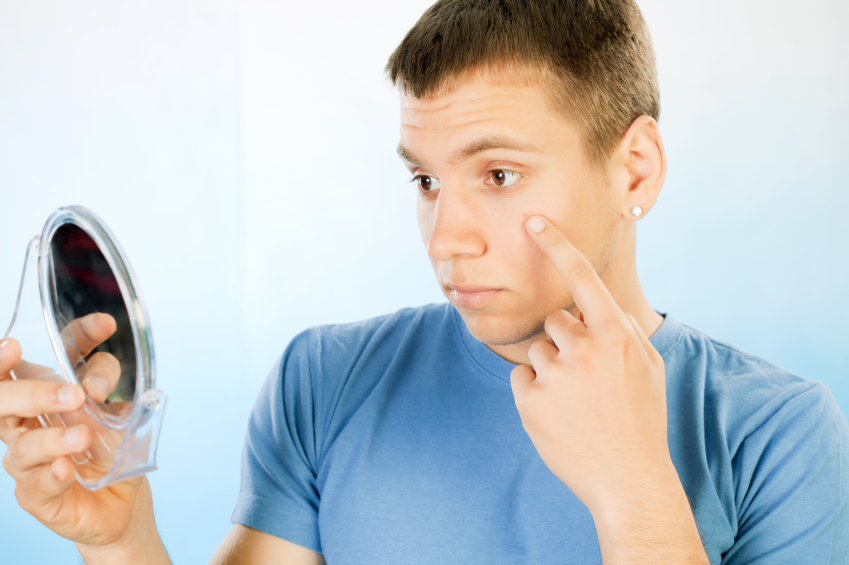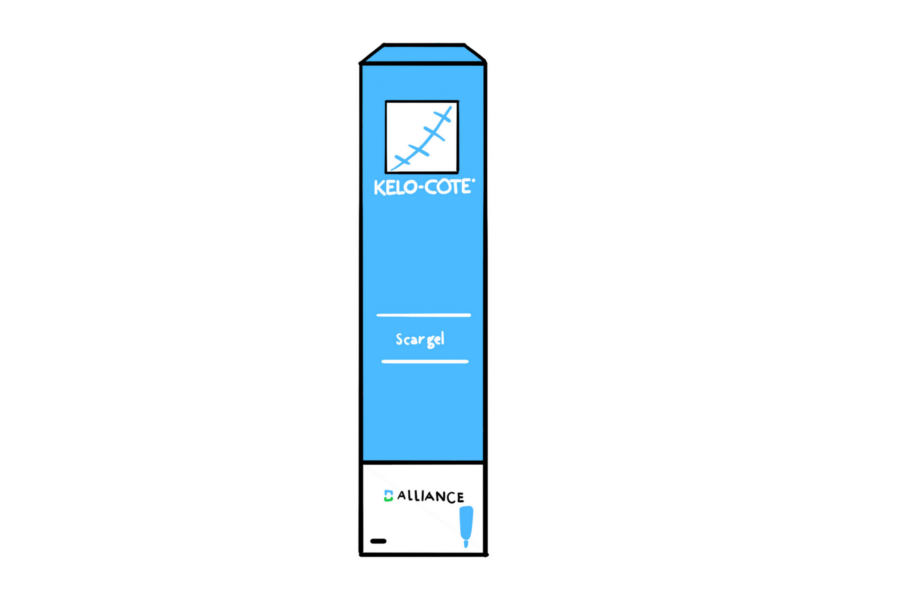Some say that the definition of true beauty is being comfortable in your own skin; however, sometimes this is easier said than done. The skin is prone to many imperfections such as blotches or blemishes that can be frustrating or downright embarrassing, and such flaws are part of the reason why commercial skin products are so highly sought after.
Perhaps one of the most difficult-to-treat skin conditions that people are faced with is discoloration resulting in uneven skin tone. This can occur when the skin produces too much pigment (hyperpigmentation) or produces too little pigment (hypopigmentation). Unlike a pimple or blackhead that disappears after a few days, skin pigmentation disorders can last a lifetime and may affect large areas of the face and body. There are many potential options to combat this problem and one of particular interest is hydroquinone. Topical hydroquinone is found in a variety of commercial and prescription products, and is marketed as a lightening agent for skin pigmentation disorders. Although known for being highly effective, you may be wondering if the results are worth the risks and costs involved with these products. Here, we will take a deeper look at hydroquinone and answer questions you may have about its uses, safety, and effectiveness.
What is Hydroquinone?
Hydroquinone (also known as hydroquinol or simply quinol) is a synthetic derivative of monobenzone, which is found in many prescription and non-prescription creams. Its primary indication is in the treatment of hyperpigmentation disorders such as melasma and freckles (ephelides)1,2. Melasma and freckles both arise from too much skin pigment produced. Melasma, in particular, occurs when patches of skin produce too much pigment, and it presents itself as dark, irregular clusters. These darkened clusters are commonly found on the skin of the upper cheek, nose, lips, and forehead.
As hyperpigmentation disorders are relatively common, especially in females during pregnancy, the efficacy of lightening agents is important. Hyperpigmentation can be initiated and made worse by sun exposure, and therefore treatments are often used in conjunction with sunscreen of at least SPF 302. At concentrations of less than 1%, hydroquinone is also used as an antioxidant in topical preparations. Some common hydroquinone creams found in Canada are Lustra, Esoterica, Glyquin and Ultraquin1.
How does it work?
Hydroquinone causes reversible lightening of the skin by inhibiting melanin production1. Melanin is a substance produced by the skin that is responsible for skin color pigmentation. Darker skin has increased amounts of melanin and hydroquinone works by blocking a certain enzyme involved in the melanin production pathway. This leads to a decreased amount of melanin produced (and therefore a decreased darkness of the skin), which results in a lighter skin tone. This process is reversible and sun exposure reverses this effect to cause re-pigmentation.
What does the evidence say?
Hydroquinone has been shown to improve a variety of hyperpigmentation conditions such as melasma, age spots, and even freckles. Current experiments have shown that both 2% hydroquinone (available over-the-counter) and 4% hydroquinone (requires prescription) are effective compared to placebo and other single-therapy agents such as ascorbic acid 5%3 and tretinoin 0.025%4,5. However, a systematic review comparing 23 different treatments have found that combination therapies are more effective than hydroquinone alone6. In particular, they found triple-combination creams (hydroquinone, tretinoin, and fluocinolone acetonide) to be the most effective.
It is important to keep in mind that everyone’s skin chemistry is different, so while one product may work well for one person, it may not be the most effective for you. There are various hydroquinone multi-combination therapies on the market; however, the majority of studies done on them have inconsistent results. This inconsistency may be due to poor study design, inadequate sample size, or simply due to the fact that everyone’s skin chemistry is different6.
Are there any safety concerns?
Common adverse reactions with the use of hydroquinone products include skin irritation, dryness, and redness, so it is recommended to start with a very small amount of the product and slowly build up the skin’s tolerance7. Sun exposure can cause more irritation and worsen the appearance of dark spots, therefore, it is important to always wear sunscreen when using hydroquinone to improve results and decrease side effects.
Other reported side effects include allergic contact dermatitis (a rash from your skin reacting to the product), darkening of the skin after the contact dermatitis resolves, nail discoloration, and lightening of the skin surrounding the area being treated8. However, these side effects generally go away after discontinuing hydroquinone. There have been rare reports of exogenous ochronosis, a bluish black discoloration of the skin, after prolonged use over a large area in dark skinned individuals9. Previously it was thought that hydroquinone may cause renal cancer; however, it was concluded that there is no evidence that hydroquinone increases the risk of cancer in humans10.
There is limited information on the safety of using hydroquinone during pregnancy, but since it is highly absorbed into the skin, it is recommended to limit product use to a minimum during pregnancy and it should be avoided while breastfeeding since it is unknown if hydroquinone is transferred into the breast milk2.
Bottom Line
Hydroquinone is proven effective at lightening skin pigmentation1. However, based on limited clinical evidence on safety regarding use of hydroquinone, patients should consult their physician before starting use of any hydroquinone products. Also, your physician can help you choose a safe and effective concentration of topical hydroquinone and an appropriate duration of treatment. As no data on safety or effectiveness has been established, extreme caution is recommended for children under 12 and for women who are pregnant or breastfeeding11.
Authors:
Daniel Leung, B.Sc. Pharm Candidate
Callen Kenyon, B.Sc. Pharm Candidate
Alyssa Schmode, B.Sc. Pharm Candidate
Seth Gilfillan, B.Sc. Pharm Candidate
Tuo Huang Zhang, B.Sc. Pharm Candidate
Kataraina Dewald, B.Sc. Pharm Candidate
Ashley Badach, B.Sc. Pharm Candidate
Faculty of Pharmacy and Pharmaceutical Sciences
University of Alberta
Edited and Reviewed by The Health Aisle Team
References:
- Hydroquinone. Lexi-Comp OnlineTM. Accessed on April 13, 2014.
- Kleiman, N. (2013). Prevention and Treatment of Sun-Induced Skin Damage. Therapeutic Choices for Minor Ailments, p.630, 848
- Nanda S, Grover C, Reddy BS. (2004). Efficacy of hydroquinone (2%) versus tretinoin (0.025%) as adjunct topical agents for chemical peeling in patients of melasma. Dermatologic Surgery: Official Publication for American Society for Dermatologic Surgery [Et Al.] [Dermatol Surg]. 30 (3): 385-388; discussion 389.
- Haddad AL, Matos LF, Brunstein F, Ferreira LM, Silva A, Costa D Jr. (2003). A clinical, prospective, randomized, double-blind trial comparing skin whitening complex with hydroquinone vs. placebo in the treatment of melasma. International Journal of Dermatology [Int J Dermatol]. 42(2):153-156.
- Espinal-Perez LE, Moncada B, Castanedo-Cazares JP. (2004). A double-blind randomized trial of 5% ascorbic acid vs. 4% hydroquinone in melasma. International Journal of Dermatology [Int J Dermatol]. 43(8): 604-607.
- Rajaratnam R, Halpern J, Salim A, Emmett C. (2010). Interventions for melasma. The Cochrane Database of Systematic Reviews [Cochrane Database Syst Rev]. Cochrane AN: CD003583. Date of Electronic Publication: 2010 Jul 07.
- Sanchez, J. L., Vazquez, M. (1982), A Hydroquinone Solution in the Treatment of Melasma. International Journal of Dermatology, 21: 55–59. doi: 10.1111/j.1365-4362.1982
- Halder, R.M., Richards, G.M. (2004), Topical Agents used in the Management of Hyperpigmentation. Skin Therapy Letter. 2004; 9(6)
- Charlín, R., Barcaui, C., Kac, B., Soares, D., Rabello-Fonseca, R., & Azulay-Abulafia, L. (2008). Hydroquinone-induced exogenous ochronosis: a report of four cases and usefulness of dermoscopy. International Journal of Dermatology. 47(1):19-23. doi:10.1111/j.1365-4632.2007.03351
- McGregor, D. (2007). Hydroquinone: an evaluation of the human risks from its carcinogenic and mutagenic properties. Critical Reviews in Toxicology, 37(10): 887-914.
- Nordlund, J. J., Grimes, P. E., & Ortonne, J. P. (2006). The safety of hydroquinone. Journal of the European Academy of Dermatology & Venereology. 20(7):781-787. doi:10.1111/j.1468-3083.2006.01670.x


